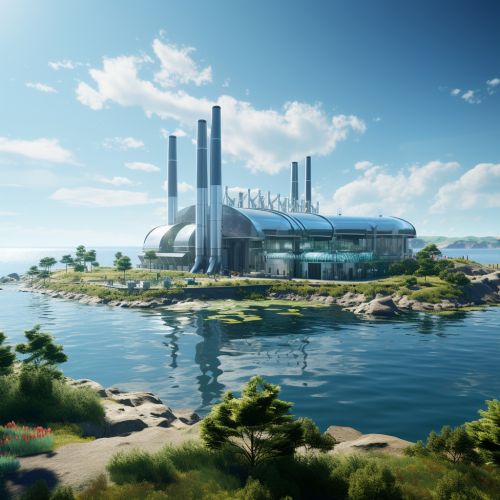Advances in Blue Energy from Osmotic Power
Introduction
Blue energy, also known as osmotic power, is a form of renewable energy generated from the difference in the salt concentration between seawater and river water. This energy source has seen significant advances in recent years, thanks to the development of innovative technologies and the increasing need for sustainable energy solutions.
Osmotic Power: An Overview
Osmotic power is a type of energy that is generated when freshwater and saltwater are mixed. This process is facilitated by a semi-permeable membrane, which allows water molecules to pass through but blocks the passage of salt ions. The movement of water from the freshwater side to the saltwater side creates a pressure difference, which can be converted into electrical energy using a turbine.
Advancements in Blue Energy
The field of blue energy has seen numerous advancements in recent years, particularly in the areas of membrane technology, system efficiency, and environmental impact.
Membrane Technology
The semi-permeable membrane is a critical component in osmotic power generation. Advances in membrane technology have led to the development of membranes with higher selectivity and permeability, which significantly increase the efficiency of osmotic power plants. For instance, the use of nanotechnology in membrane fabrication has resulted in the creation of nanostructured membranes with superior performance characteristics.
System Efficiency
Improvements in system efficiency have also contributed to the advancement of blue energy. These include the optimization of system design and operation, as well as the integration of osmotic power plants with other renewable energy systems. For example, the combination of osmotic power with solar energy or wind energy can enhance the overall efficiency and reliability of the energy system.
Environmental Impact
The environmental impact of blue energy has been another area of focus in recent advancements. Studies have shown that osmotic power generation has a low environmental footprint, making it a promising solution for sustainable energy production. Furthermore, efforts have been made to minimize the potential negative impacts of osmotic power plants on aquatic ecosystems, such as the disruption of salinity levels and the entrainment of aquatic organisms.
Future Perspectives
The future of blue energy looks promising, with ongoing research and development efforts aimed at further improving the efficiency and sustainability of osmotic power generation. Potential areas of exploration include the use of advanced materials for membrane fabrication, the development of novel system designs, and the integration of osmotic power with other forms of renewable energy.


